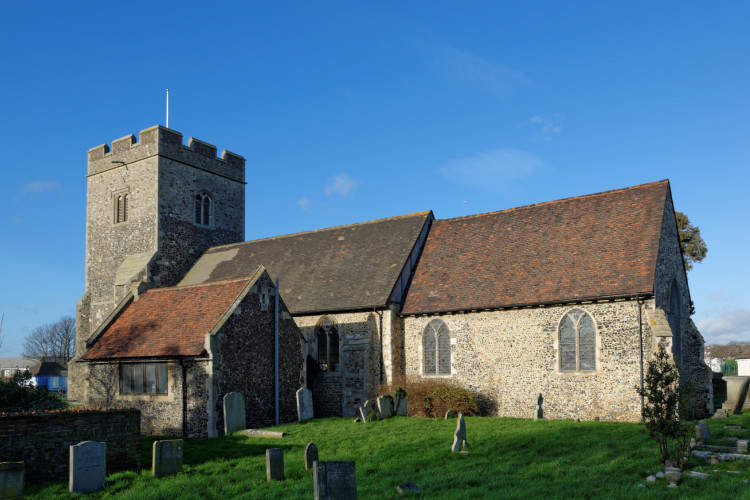Names and buildings that stitch together the long history of Chadwell St Mary
By Susan Yates - Nub News contributor 5th Mar 2023
By Susan Yates - Nub News contributor 5th Mar 2023

Susan Yates, chair of Thurrock History Society, continues her occasional series of features with a a look through the history of Chadwell St Mary
--------------
WE all know that the name Essex derives from the people of the East Saxons. Most of the names in Thurrock are of Saxon derivation.
The name Thurrock comes not from Thors Oak but Turroc, ( the part of a ship where the rubbish collects), as this stretch of the Thames is a similar shape.
The same with Chadwell. Although it did have a well it had no connection with St Chad. It was St Cedd, his brother, who visited Thurrock.
The first record of Chadwell is in the Domesday Book of 1086 when it is known as Celdeuuella meaning 'cold spring' according to Reaney's Place Names of Essex. The appendage St Mary's is merely to distinguish it from other places of the same name.
Originally Chadwell St Mary had two manors.
The Manor of Chadwell was owned by the Bishop of London.
At some time Chadwell became divided into four manors being the manors of Chadwell or Chadwell Hall, Ingleby, Longhouse and Biggin. Chadwell Hall was near the church circa 1250 it was held by someone calledde Wokindon. The Manor of Ingleby gets its name from Thomas de Ingleby and was subsequently held by Peter Simonds who died on 26th July 1587 and left land to the poor of Winchester. The house is now demolished.
The Manor of Longhouse, otherwise Chadwell Place, is first mentioned in the reign of Henry VI (1422-1461) and was held by Sir Thomas Tyrell on his death in 1476. The Manor of Biggin originally Byggynge was on the lefthand side of the road from Chadwell to Little Thurrock.
On 8th July 1741 the people of Chadwell were taken to court charged with not repairing the roads in Chadwell. They were found not responsible as the Governor of Tilbury Fort had previously paid for the repairs from profits of the Ferry and should continue to do so.
Excavations in July 1922, 700 yards south east of the church revealed a Roman oven and urns from the 3rd or 4th century. Another site 100 yards east of the church uncovered sherds of Samian ware from the 1st and 2nd century, sadly no buildings were found, but some coins were discovered. There was also an ancient ferry crossing here to Gravesend.
One of the oldest buildings in Chadwell St. Mary is Sleepers Farm which is Grade II listed. It was built in the 15th century and is timber framed and plastered with a thatched roof.
Internally extensive 17th century alterations are apparent, but much of the original framework remains.
Sleepers Farm takes its name from John Slepere in 1420 but was called Slepers in 1768. It is alleged a Mr Carpenter, whilst doing work in an upstairs passage, found under a layer of wallpaper parish officer's papers going back more than 130 years.
The school was built in 1855 for 60 children and the school log records bad behaviour in the playground. In 1882 the population was 587. A new school was opened in 1914.

The Grade I listed church of St Mary's is the oldest building in the village with its 12th century nave. Built in the early 12th century it has 14th and 15th century alterations. The churchyard has some very interesting graves especially that of Kadzuo Yamazaki.
He was a Japanese seaman who died in 1899 aged 22 years doing his duty during a fire on board the vessel Nippon Yusen Kaisha. Perhaps more important is Elizabeth Manning who lies buried here by the church wall. She died on 26th January 1805 and her death led to a very important court ruling that is still relevant today. The case was White versus Driver. It concerned a challenge to a will on the grounds of insanity. The proof lies in proving the sanity of the testator when making the will.
In the case of Elizabeth Manning who died at the house of Edward Driver she had been earlier confined to the workhouse because of her insanity and had been forced to wear a straitjacket. The defence argued that Elizabeth had appeared lucid to a bank clerk when obtaining cash a few days before her demise. The local curate said she appeared sane when making her will other witnesses agreed.
The verdict, whilst there was evidence of temporary insanity earlier in her life, found that the will was valid. It was as a result of this court case that most wills now begin with the phrase; I (name of testator) being of sound mind.
Chadwell is famous for being the one time home of Fatima Whitbread but I couldn't talk about Chadwell St Mary without mentioning another lady, Jane Packer florist extraordinaire.
Jane was born here on 22nd September 1959 in St. Francis Way which is now commemorated by a blue plaque.
Sadly, she passed away on 9th November 2011. She was a very successful florist and to promote herself she had what I consider was a brilliant idea.
She went round the receptions of the glossy magazines and gave them free bouquets. People would see them and admire them and thus she promoted her business, which became very successful culminating with the order for the 1986 wedding of Prince Andrew and Sarah Ferguson.
CHECK OUT OUR Jobs Section HERE!
thurrock vacancies updated hourly!
Click here to see more: thurrock jobs
Share:
















